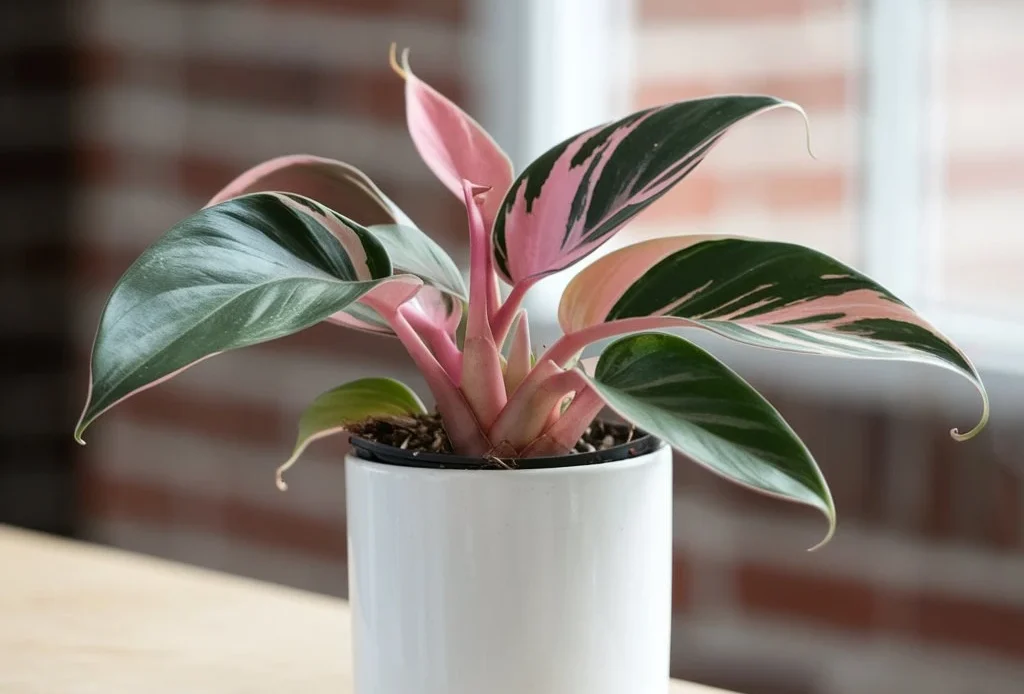
Introduction to the Pink Princess Philodendron
The Pink Princess Philodendron is a rare and stunning plant, celebrated for its unique leaves adorned with deep green and striking pink variegations. Unlike many plants with plain foliage, the Pink Princess Philodendron exhibits an exotic blend of colors, with pink streaks and splotches that give each leaf its own unique, unpredictable pattern. This philodendron’s vibrant hues are a natural phenomenon, created by a rare genetic mutation that results in pigment-lacking patches, giving it a princess-like allure.
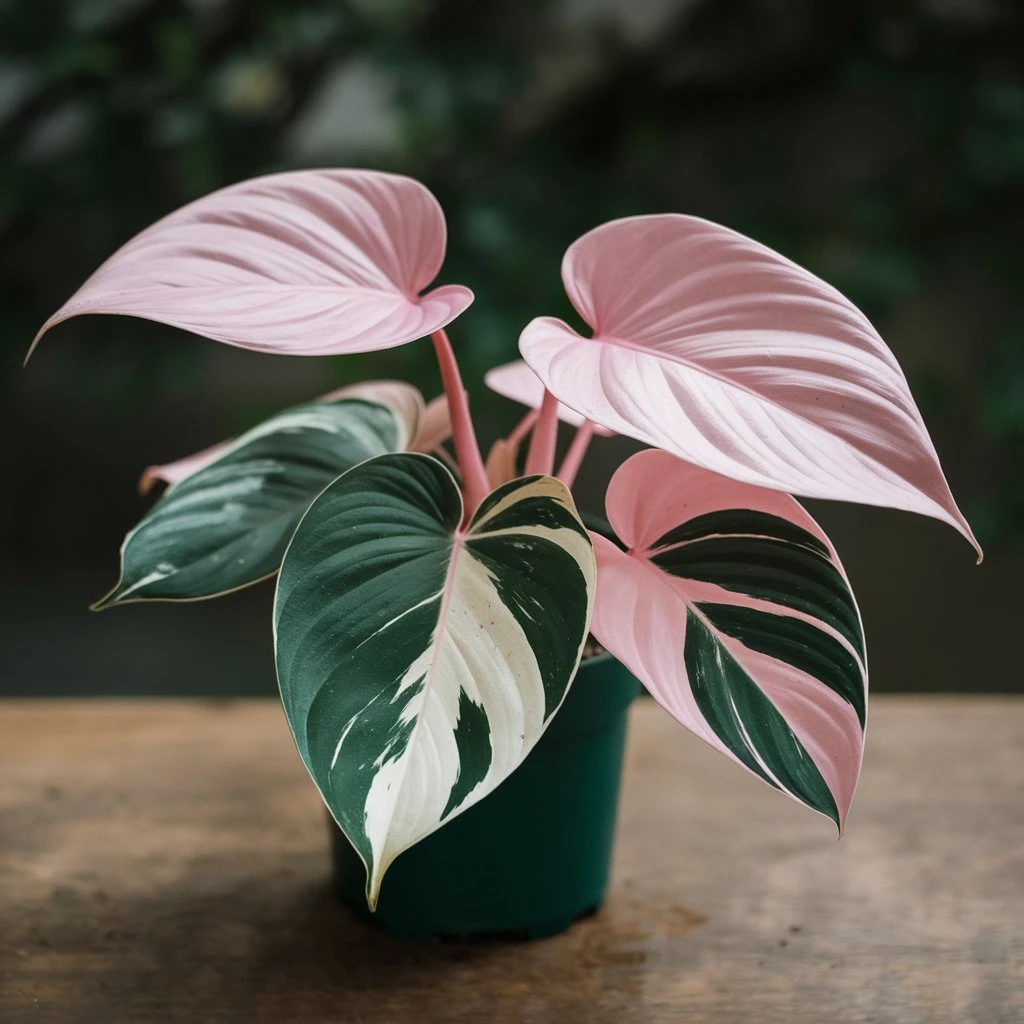
Native to the tropical rainforests of South America, the Pink Princess Philodendron thrives in warm, humid conditions. This rare plant has gained immense popularity among plant enthusiasts for its striking appearance and somewhat elusive nature; it can be challenging to find and is often considered a prized addition to any indoor collection. It also boasts a slow, graceful growth habit, allowing each leaf to unfold like a piece of art, making it a true showpiece.
Whether you’re a seasoned plant lover or just starting out, the Pink Princess Philodendron offers both beauty and a rewarding growing experience, capturing the essence of botanical elegance with ease.
Appearance and Characteristics
The Pink Princess Philodendron is truly captivating, with its dramatic, dark green leaves accented by vibrant pink variegation. Each leaf on the philodendron pink princess presents a unique pattern of pink splashes and blotches, giving it a rare, almost otherworldly appearance. The plant’s coloring ranges from soft blushes to deep, intense pinks, creating a striking contrast against the darker green hues that often have a slightly glossy finish.
Table of Contents
Unlike other philodendrons, the Pink Princess Philodendron boasts a compact, manageable growth habit, with leaves typically extending outwards rather than sprawling. Its heart-shaped foliage, borne on red-tinged stems, adds to its appeal, creating a distinctive silhouette that draws attention in any indoor setting. This plant is a climber, meaning it appreciates a bit of support to thrive, which often enhances its elegant form and can help showcase its unusual colors.
The philodendron pink princess is as delicate as it is beautiful. To maintain its unique variation, it requires indirect light, warmth, and a balanced environment to avoid fading or reverting to green. These specific needs make it a plant that is both alluring and, for many, a rewarding challenge to grow successfully indoors.
Caring for Your Pink Princess Philodendron
Caring for your Pink Princess Philodendron can be a highly rewarding experience, but it requires some attention to detail. This stunning plant demands the right conditions to maintain its vibrant pink variegation and overall health. Here’s how to provide the best pink princess philodendron care.
The first and most critical factor is light. The Philodendron pink princess thrives in bright, indirect light. Too much direct sunlight can scorch the leaves and diminish the pink hues, while too little light will result in less vibrant variation. Position your plant close to a window that receives filtered light to achieve optimal growth.
Watering is another key aspect of care. The Pink Princess Philodendron prefers to dry out slightly between waterings. Overwatering can lead to root rot, so always ensure that the top inch of soil is dry before adding more water. It’s best to water thoroughly, allowing the water to drain from the bottom of the pot, preventing stagnant moisture around the roots.
Humidity is essential for the Philodendron pink princess, as it thrives in moist, tropical environments. If your home is dry, especially in winter, consider using a humidifier or placing the plant in a humidity tray to maintain moisture levels. Regular misting can also help, though be cautious not to let water accumulate on the leaves for too long.
Soil is another crucial element for pink princess philodendron care. Well-draining potting soil is ideal, as it prevents water from sitting around the roots. A mixture of peat, perlite, and pine bark offers good aeration and drainage, promoting healthy root growth.
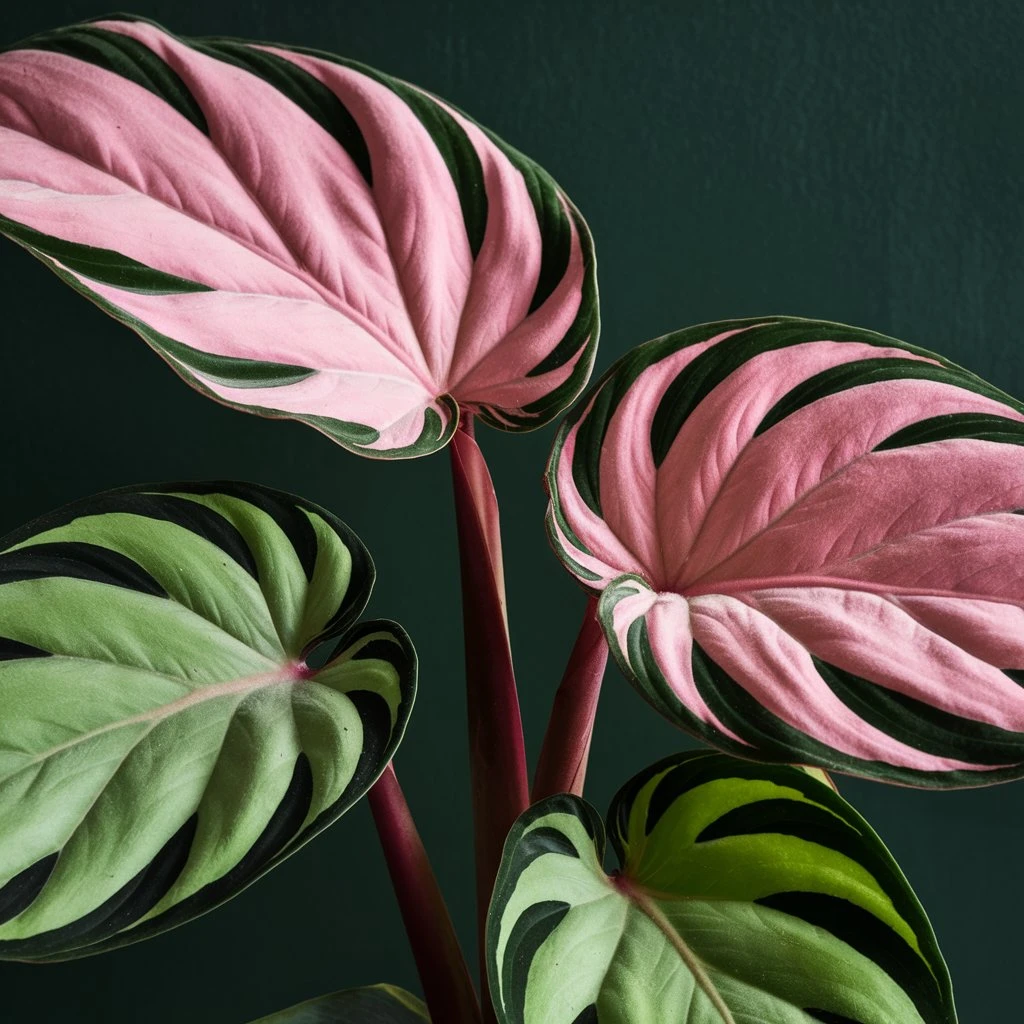
Lastly, regular pruning will encourage the plant to grow bushier and more compact, allowing its distinctive variety to shine. Eliminate any discolored or damaged leaves to preserve its visual attractiveness. As the plant grows, you may also want to provide a support structure, such as a moss pole or trellis, to encourage vertical growth and keep the plant healthy.
By providing optimal conditions and attentive care, the Pink Princess Philodendron will reward you with stunning foliage that’s sure to impress.
Propagation Tips for the Pink Princess Philodendron
The Pink Princess Philodendron is a sought-after plant for its striking variegation and elegant growth. Propagating this beauty allows you to multiply its allure and share it with others. Whether you’re looking to grow a new plant or simply expand your collection, understanding how to properly propagate your Philodendron pink princess is essential. Here are some practical tips for success.
The most effective propagation method for the Pink Princess Philodendron is stem cuttings. Start by choosing a robust stem that contains a minimum of one node. Nodes are critical for successful rooting, so make sure to cut just below a node, as this is where the roots will emerge. A sharp, clean pair of scissors or pruning shears is vital to avoid damage to the plant.
After cutting, place the stem in a glass of water, ensuring that the node is submerged but the leaves remain above the waterline. This creates the ideal conditions for roots to form. Make sure to change the water every few days to prevent stagnation and the growth of bacteria, which could harm the cutting.
Another effective method for Philodendron pink princess propagation is by placing the cutting directly into soil. Fill a small pot with a well-draining potting mix, such as a blend of peat, perlite, and pine bark, to encourage root growth. Insert the cutting into the soil, ensuring that the node is buried while leaving the leaves above the surface. Lightly water the soil and place the pot in a warm, humid environment with indirect light. You may also want to cover the pot with a plastic bag or a plastic dome to create a mini greenhouse effect, which will help maintain humidity levels.
For both methods, the cutting will take anywhere from two to six weeks to root, depending on environmental factors like temperature, humidity, and light. During this time, it’s important to keep the cutting in a location with consistent warmth, ideally between 70°F and 80°F (21°C–27°C), and in bright, indirect light.
Once roots have formed, you can transfer your new Pink Princess Philodendron into a larger pot with fresh soil, following the Pink Princess Philodendron care guidelines for a healthy and thriving plant. Be sure to monitor the humidity and water requirements during this early stage to help the young plant acclimate and grow strong.
Propagation is an exciting and rewarding part of Philodendron pink princess care. With patience and the right conditions, you’ll be able to enjoy multiple plants of this beautiful, unique species in no time.
Common Issues and Troubleshooting
The Pink Princess Philodendron is a resilient and beautiful plant, but like all houseplants, it can face challenges. Identifying and addressing these issues early can help ensure the health and longevity of your plant. Below are some common problems that may arise with your Philodendron pink princess and how to troubleshoot them.
1. Yellowing Leaves
One of the most frequent problems for the pink princess philodendron plant is yellowing leaves.This may indicate excessive watering or inadequate drainage. Philodendron pink princess care involves ensuring the plant is not sitting in waterlogged soil. Make sure the pot has sufficient drainage holes and that you’re allowing the soil to dry out slightly between waterings. On the flip side, underwatering can also cause leaf yellowing, so be mindful to provide enough moisture during dry spells.
2. Brown Leaf Tips
If you notice the tips of the leaves turning brown, it’s often a sign of underwatering, low humidity, or exposure to drafts. The Pink Princess Philodendron thrives in a humid environment, so it’s important to keep humidity levels around 50–60%. You can increase humidity by misting the plant, using a humidifier, or placing the pot on a tray with water and pebbles. Avoid placing the plant near air conditioning or heating vents that can dry out the air.
3. Stunted Growth or Leggy Vines
Leggy growth with sparse leaves on a Philodendron pink princess may indicate insufficient light. While this plant prefers indirect light, too little sunlight can cause it to stretch toward the light source, resulting in a spindly appearance. Place your pink princess philodendron in a spot with bright, indirect light, but avoid direct sunlight, which can scorch the leaves. If the plant is not growing as expected, try moving it to a brighter location.
4. Lack of Pink Variegation
The signature pink variation of the Pink Princess Philodendron is one of its most striking features. However, some plants may struggle to develop this coloration, especially if they aren’t getting enough light. The pink pigmentation depends on the plant receiving adequate light, so increase the brightness of the environment while ensuring the plant isn’t exposed to direct sunlight. However, keep in mind that variation can also be inconsistent and may vary between individual plants.
5. Pest Infestation
Like many houseplants, the Philodendron pink princess plant can attract pests such as spider mites, aphids, or mealybugs. These pests can cause damage to the leaves, leaving spots or webbing. Regularly inspect the plant for pests, especially on the underside of leaves and near leaf nodes. If pests are detected, treat the plant with an insecticidal soap or a natural remedy like neem oil to prevent further damage.
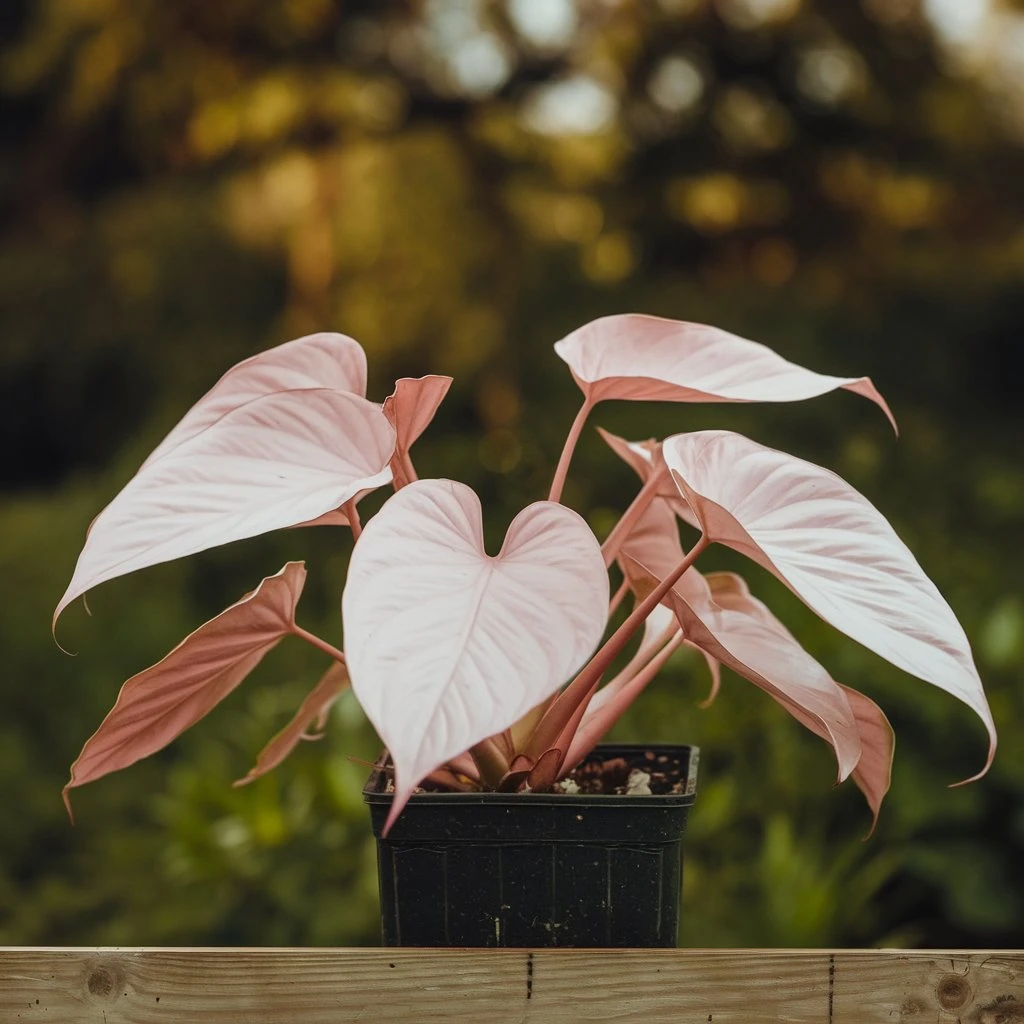
By addressing these common issues promptly, you can keep your pink princess philodendron thriving and vibrant for years to come. Proper Philodendron pink princess care requires attention to light, humidity, and watering, but with the right knowledge and adjustments, this beautiful plant will continue to be a showstopper in your collection.
Decorating and Styling with Pink Princess Philodendron
The Pink Princess Philodendron is a striking and versatile plant that can elevate any space. With its dramatic pink variegation and lush, glossy leaves, it serves as both a statement piece and a subtle touch of nature. Whether placed in a minimalist setting or as a vibrant focal point, the philodendron pink princess is perfect for adding a dash of luxury and life to your home decor.
Creating a Statement Piece
One of the best ways to showcase the beauty of the Pink Princess Philodendron is by placing it in an eye-catching location. A tall, elegant pot placed in the corner of a living room or on a pedestal can allow the plant to cascade beautifully, highlighting its variegated leaves. The contrast of the deep green with vibrant pink streaks instantly draws attention, making it an ideal centerpiece. For even more dramatic effect, group several plants together in different sizes and containers to create a lush, tropical vibe.
Incorporating into Modern or Bohemian Decor
The philodendron pink princess plant pairs exceptionally well with modern or bohemian interiors. The sleek lines and architectural form of the plant complement contemporary furniture, while the colorful leaves bring a touch of organic warmth to any room. In a bohemian setting, combine it with rattan baskets or wooden planters to enhance the plant’s natural aesthetic. The unique variegation adds an intriguing pop of color that fits seamlessly into the eclectic nature of boho design.
Hanging Planters for Vertical Appeal
For a more dynamic and space-efficient option, consider using hanging planters to display your Pink Princess Philodendron. Allowing the vines to trail down adds a sense of elegance and movement to the room. Hanging planters made from materials like ceramic, macramé, or woven baskets can further complement the plant’s natural beauty, giving it an earthy, textured appearance.
Styling in Smaller Spaces
In small apartments or rooms, the philodendron pink princess can still make a bold statement. Place it on shelves, bookcases, or windowsills where it can receive indirect light. A small plant in a chic pot can create a fresh and inviting atmosphere, adding life to otherwise overlooked corners. For pink princess philodendron care, remember to monitor its light exposure to ensure it thrives and maintains its beautiful variegation.

By strategically placing your Philodendron pink princess plant in the right spot, it can enhance the visual appeal of any space, complementing both modern and rustic themes. With a little creativity, this stunning plant becomes more than just a piece of decor—it becomes an essential part of your interior design.
Where to Buy and How to Choose a Healthy Plant
If you’re looking to add a Pink Princess Philodendron to your collection, it’s essential to know where to find reputable sellers and how to select a vibrant, healthy plant. This plant, prized for its dramatic pink and green variegation, has become quite popular, so selecting a healthy specimen will help ensure you enjoy its beauty for years.
Where to Buy
To start, look for established plant nurseries or online sellers that specialize in tropical plants. Many local nurseries now stock the philodendron pink princess, but because of its rarity, you may need to explore online plant shops, specialty nurseries, or plant marketplaces. Online platforms such as Etsy and eBay also feature a range of sellers, though it’s best to check reviews and seller reputations. Reputable online nurseries often include photos of the exact plant for sale, which is crucial when selecting one with desired pink variegation. For those buying locally, visit plant markets or garden centers that frequently update their stock; this can be a great way to see and assess the plant in person.
How to Choose a Healthy Plant
When selecting a philodendron pink princess plant, look closely at the leaves. Ideally, it should have a balanced mix of pink and green, which indicates healthy variegation. However, avoid plants with entirely pink leaves, as these may not photosynthesize well and could struggle in the long term. Look for leaves that are vibrant, glossy, and free of spots, as these signs suggest the plant is thriving. Additionally, inspect the stems and roots, if visible. Healthy stems should feel firm, and roots should be a light color, firm, and free of rot.
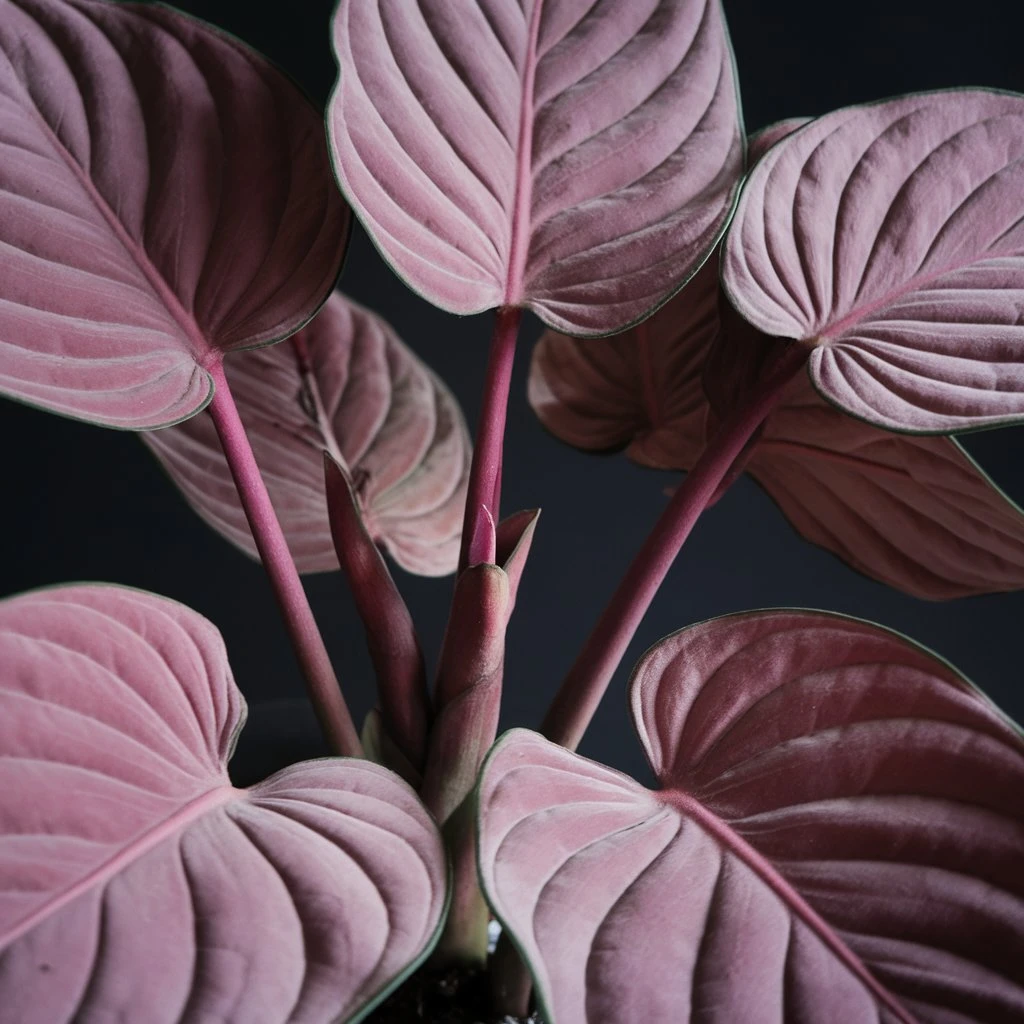
When it comes to pink princess philodendron care, remember that these plants thrive in indirect sunlight and moderate humidity. Buying a healthy plant is only the first step; caring for it properly will maintain its beautiful pink hues and lush foliage. Take the time to select a plant that shows strong growth and even variegation to ensure it remains a striking addition to your indoor garden.
Conclusion and Final Tips for Thriving Pink Princess Philodendrons
Growing a Pink Princess Philodendron can be incredibly rewarding, as it brings unique color and elegance to any indoor space. With a bit of dedicated care, these plants flourish and reward you with stunning variegation and lush foliage. While the philodendron pink princess is known for its low-maintenance nature, a few targeted practices can elevate its growth and beauty.
First, ensure your philodendron pink princess plant receives bright, indirect light. Although they can tolerate lower light, the variegation shines best with a balance of sunlight—not too harsh but sufficiently strong. Regular rotation allows for even light exposure, encouraging balanced leaf color and growth.
Humidity is another essential factor in pink princess philodendron care. While they adapt well to average indoor humidity, these tropical plants truly thrive in higher humidity environments. Using a humidifier or setting the plant on a tray with water and pebbles can create an ideal setting. Also, avoid overwatering, as these plants prefer well-draining soil to prevent root rot. A monthly check for any yellowing or drooping leaves will also help you quickly address potential issues.
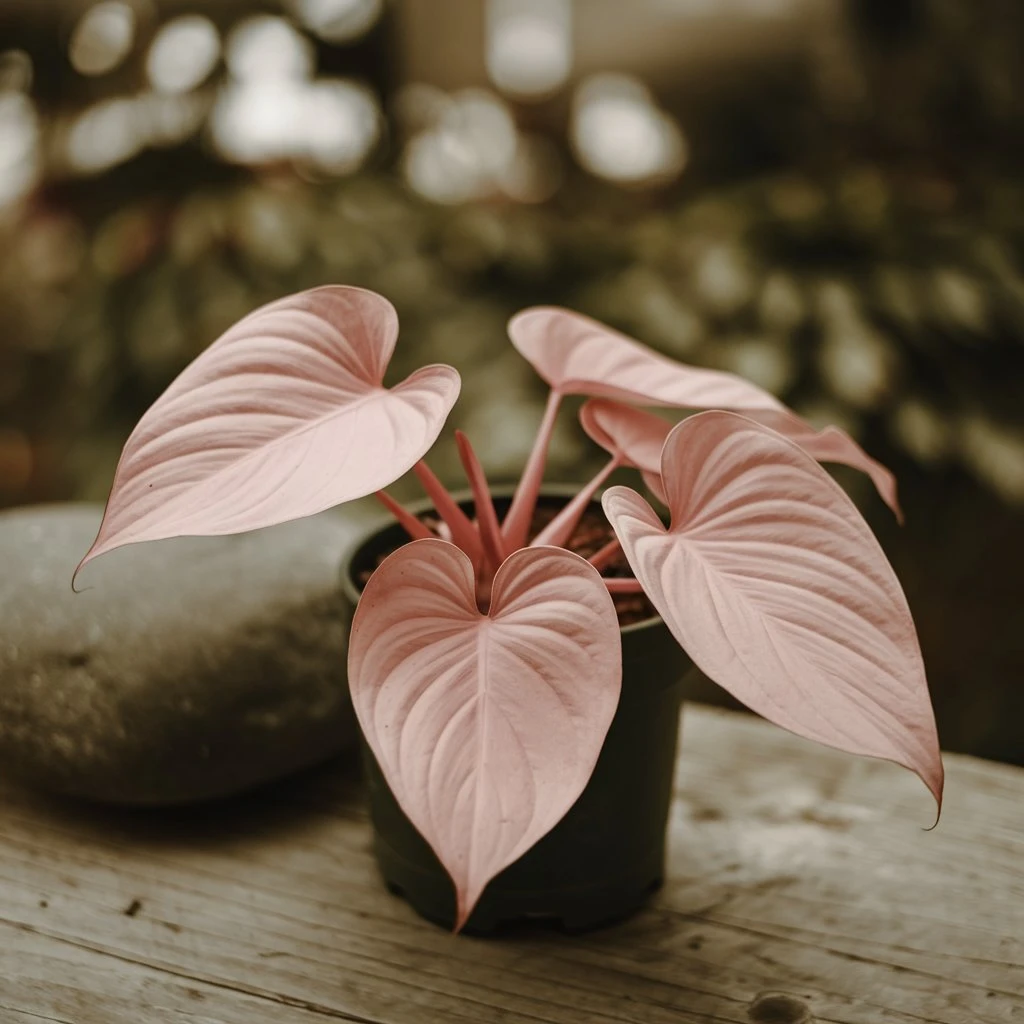
When pruning, cut close to a node to stimulate fresh growth. This approach encourages fuller, healthier foliage and helps maintain the plant’s balance. Periodic fertilization, particularly in spring and summer, is key to supporting vibrant growth; use a diluted liquid fertilizer once a month.
In summary, consistency is the key to philodendron pink princess care. With attention to light, humidity, and a gentle hand in watering, your Pink Princess Philodendron can grow into a truly spectacular specimen that enriches your home with color and life.
By Mark


